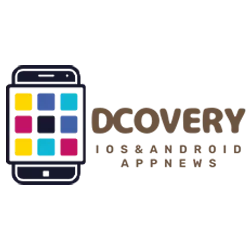Google Cue the first one. The video that showed this is at fault Capabilities of the artificial intelligence model Gemini shown during the presentation of the new Big G model.
In fact, according to many experts, it seemed too good to be true, so much so that Bloomberg expressed many doubts about its veracity, saying that it could have been edited to be more convincing.
There Gemini demo, which has racked up 1.6 million views on YouTube, features a long back-and-forth in which artificial intelligence responds to voice and video messages in real time. A little too quick, the answers a little too ready. Hence Bloomberg’s doubts and now Google’s admission.
In describing the video, Google said it sped up responses to make the demo more realistic. But he also admitted that the AI did not respond to voice or videos.
In a blog post published at the same time as the demo, Google revealed how the video was actually created.
Big G confirmed that the operation was carried out by stimulating artificial intelligence “using frames from the film and sending suggestions via text.”
“Our Gemini demo video shows real Gemini suggestions and results,” said a Google spokesperson. “We built it to demonstrate the breadth of Gemini’s capabilities and inspire developers.”
In the video, a person asks Google’s artificial intelligence a series of questions as it displays objects on the screen. For example, at one point the demonstrator holds up a rubber duck and asks Gemini if she wants to swim.
At first, the system doesn’t seem sure what material it’s made of, but after the person crushes it – causing the classic high-pitched whistle – the AI correctly identifies the object.
However, what appears to be happening at first glance in the video is very different from what actually happened when the instructions were generated.
The AI was actually shown a still image of the duck and asked what material it was made of. However, she subsequently received a text message explaining that the duck makes a sound when squeezed, leading to her correct identification.

In another step, the person plays the classic three-card game of cups and balls and says that the AI can determine where he has moved. But once again, the AI responded not to a video, but to a series of still images showing cups being moved and swapped.
Google clarified that the demo was created by recording video footage to “test Gemini’s capabilities across a variety of challenges.”
While the sequences were shortened and still images were used, the video voiceover was taken directly from the written instructions entered into Gemini.
The twin game
But there is another element of the video that distorts the truth even further.
At some point, the user places a world map and asks the AI, “Develop a game idea based on what you see… and use emojis.”
The artificial intelligence apparently responds by inventing a game called “Guess the Country”, in which it provides clues about the peculiarity of the nation (e.g. a kangaroo and a koala) and checks the correctness of the player’s answer which country (in this case). case, l ‘Australia). But in reality, according to Google’s blog, artificial intelligence didn’t even invent this game.

Instead, the AI was given the following instruction: “Let’s play a game. Think of a country and give me a clue. The reference must be specific enough to indicate only one correct country. I will try to show the country on a map,” the message reads.
The user then provided the AI with examples of correct and incorrect answers.
Gemini was then able to generate clues based on still images of a map and detect whether the user was pointing to the correct country or not.
It remains a surprising passage, but it is not the same as claiming that artificial intelligence invented the game.
Google’s AI model is undoubtedly interesting regardless of its use of still images and text-based instructions, but the way it works seems to show that its capabilities are very similar to OpenAI’s GPT-4.
Which of the two systems is the more advanced is currently unclear and perhaps impossible to decide, but Google is already trying to catch up by working on the next version of its artificial intelligence.



